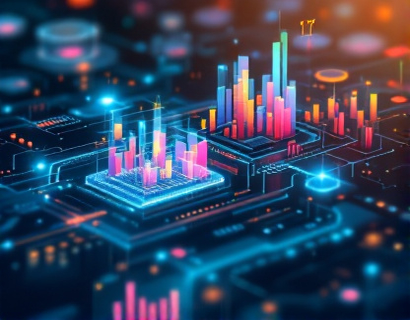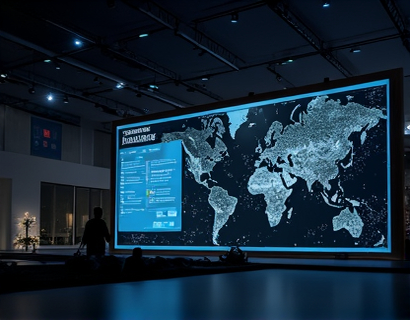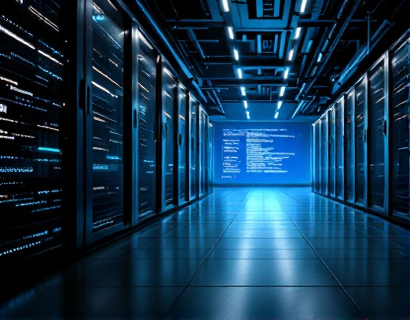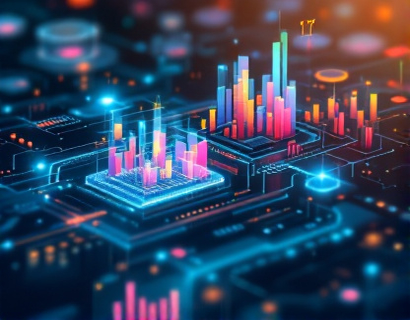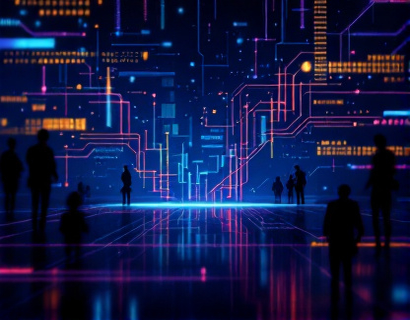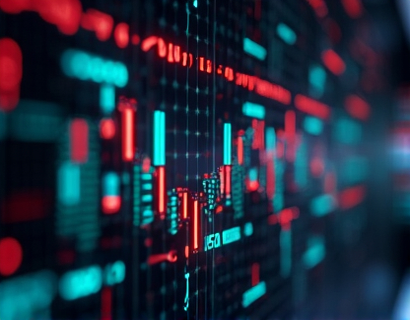Next-Gen QR Code Solutions: Elevating Business Engagement and Social Media Interaction for Modern Enterprises
In the rapidly evolving digital landscape, businesses and social media managers are constantly seeking innovative ways to enhance engagement and interaction with their audience. One such technology that has emerged as a game-changer is the next-generation QR Code, often referred to as enhanced or intelligent QR Codes. These advanced QR Codes are not just a simple upgrade from their traditional counterparts; they offer a suite of features that significantly elevate the way brands connect with consumers and foster deeper, more meaningful interactions.
The evolution of QR Codes into next-gen solutions is driven by the need for more interactive, customizable, and user-friendly tools. Traditional QR Codes, while effective in basic applications, have limitations when it comes to providing rich, dynamic content and seamless user experiences. Next-gen QR Codes address these limitations by integrating advanced technologies such as NFC, augmented reality (AR), and real-time data updates, making them indispensable for modern enterprises looking to stay ahead in the digital race.
Enhanced Content Delivery
One of the primary advantages of next-gen QR Codes is their ability to deliver rich, multimedia content. Unlike standard QR Codes that typically link to a static URL, advanced QR Codes can direct users to interactive web pages, videos, 3D models, and even virtual reality (VR) experiences. This capability allows businesses to create immersive and engaging content that captivates the audience and leaves a lasting impression. For instance, a retail brand can use a next-gen QR Code to showcase a product in 3D, allowing customers to explore its features from all angles before making a purchase decision.
Moreover, next-gen QR Codes can dynamically update their content without the need for physical changes. This means that businesses can refresh information, promotions, or even entire campaigns on the fly, ensuring that the content remains relevant and timely. For example, a travel company can use a QR Code that, when scanned, provides the latest flight deals, hotel offers, and travel tips, all of which can be updated in real-time based on user interactions and preferences.
Customization and Branding
Customization is another key feature of next-gen QR Codes. These advanced codes can be tailored to match a brand's identity, including logos, colors, and design elements. This level of personalization not only enhances the visual appeal of the QR Code but also reinforces brand recognition and loyalty. When a customer scans a QR Code that aligns with the brand's aesthetic, it creates a cohesive and professional experience that resonates on a deeper level.
For instance, a luxury fashion brand can design a QR Code that reflects its elegant and sophisticated image, complete with a custom logo and color scheme. When customers interact with this QR Code, they are immediately immersed in a branded experience that aligns with the high-end values of the brand. This not only improves engagement but also builds a stronger emotional connection with the audience.
Interactive and Gamified Experiences
Next-gen QR Codes are not just about static information; they can also be used to create interactive and gamified experiences that engage users in unique and fun ways. By integrating AR technology, businesses can transform a simple QR Code scan into an interactive adventure. For example, a gaming company can use a QR Code to launch a mobile game, where scanning the code not only downloads the game but also triggers an AR experience that brings the game's world to life in the user's environment.
Similarly, in the education sector, next-gen QR Codes can be used to create interactive learning modules. A university can place a QR Code on a campus map that, when scanned, provides students with an AR tour of the campus, complete with historical facts, student testimonials, and important landmarks. This not only enhances the student experience but also provides a memorable and engaging way to explore the campus.
Real-Time Data and Personalization
One of the most powerful features of next-gen QR Codes is their ability to interact with real-time data. This means that the content displayed when a QR Code is scanned can be dynamically generated based on user data, preferences, and behavior. For instance, a retail store can use a QR Code that, when scanned, shows personalized product recommendations based on the customer's previous purchases and browsing history. This level of personalization not only improves the shopping experience but also increases the likelihood of conversion.
In the context of social media, next-gen QR Codes can be used to create highly targeted and personalized content. A brand can scan a QR Code and be directed to a social media page or a specific post that is tailored to their interests. For example, a fashion brand can use a QR Code in a magazine that, when scanned, shows a curated feed of outfits and products that match the reader's style preferences, as determined by their social media activity.
Enhanced Analytics and Insights
Another significant advantage of next-gen QR Codes is the advanced analytics and insights they provide. Unlike traditional QR Codes that offer limited tracking capabilities, advanced QR Codes can track detailed user interactions, including the number of scans, user demographics, and even the time spent on the linked content. This data is invaluable for businesses looking to optimize their marketing strategies and understand customer behavior more deeply.
For instance, a brand can use the analytics provided by next-gen QR Codes to identify which content types are most engaging, which demographics are most active, and which channels are driving the most scans. This information can then be used to refine marketing campaigns, improve user experiences, and allocate resources more effectively. In the realm of social media, brands can gain insights into how their content is performing and make data-driven decisions to enhance their online presence.
Integration with Social Media Platforms
Next-gen QR Codes seamlessly integrate with social media platforms, making it easier for businesses to drive traffic and engagement across multiple channels. By linking QR Codes to social media profiles, businesses can encourage users to follow them, share content, and interact with the brand in real-time. This integration not only amplifies the reach of the brand but also fosters a more connected and active community.
For example, a music festival can use a QR Code that, when scanned, directs users to the festival's official Instagram page, where they can follow the event, see behind-the-scenes content, and engage with other attendees. This creates a seamless transition from offline to online engagement, ensuring that the festival's presence is strong both in person and on social media.
Security and Trust
Security is a critical concern in the digital age, and next-gen QR Codes address this by incorporating advanced security features. These codes can include encryption and authentication mechanisms to ensure that the content they link to is safe and trustworthy. This is particularly important for businesses that handle sensitive information or transactions.
For instance, a financial institution can use a QR Code that, when scanned, securely logs the user into their online banking portal. The encryption ensures that the user's credentials are protected during the scan process, building trust and confidence in the brand's digital services. This level of security not only enhances the user experience but also protects the brand from potential security breaches.
Environmental Sustainability
In an era where environmental sustainability is increasingly important, next-gen QR Codes offer a more eco-friendly alternative to traditional printing methods. Since QR Codes can be dynamically updated and distributed digitally, there is less need for physical prints, reducing paper waste and the carbon footprint associated with printing and distribution. This aligns with the growing demand for sustainable business practices and can be a compelling selling point for environmentally conscious consumers.
For example, a magazine can replace traditional QR Codes with digital versions that are hosted on a website or sent via email. This not only reduces the need for physical copies but also allows for more frequent updates and a wider reach without the environmental impact of printing.
Case Studies and Success Stories
To illustrate the impact of next-gen QR Codes, let's look at a few success stories from various industries. In the hospitality sector, a luxury hotel chain implemented next-gen QR Codes on their room keys. When guests scanned the code, they were greeted with a personalized welcome message, a map of the hotel, and special offers based on their loyalty program status. This not only enhanced the guest experience but also increased engagement and repeat visits.
In the healthcare industry, a hospital used next-gen QR Codes on patient wristbands to provide quick access to medical records, appointment schedules, and educational resources. This streamlined the patient experience, reduced wait times, and improved overall satisfaction. The real-time data tracking also helped the hospital optimize its operations and resource allocation.
In the educational sector, a university implemented next-gen QR Codes on campus maps to offer an interactive tour. Students and visitors could scan the code to access AR content, including historical information, campus landmarks, and event schedules. This enhanced the visitor experience and provided a unique way to engage with the campus community.
Conclusion
Next-gen QR Codes represent a significant leap forward in business engagement and social media interaction. By offering enhanced content delivery, customization, interactivity, real-time data, seamless social media integration, advanced security, and environmental sustainability, these advanced codes provide modern enterprises with powerful tools to connect with their audience in meaningful ways. As businesses continue to seek innovative solutions to stay competitive, next-gen QR Codes are poised to play a crucial role in shaping the future of digital engagement.
















